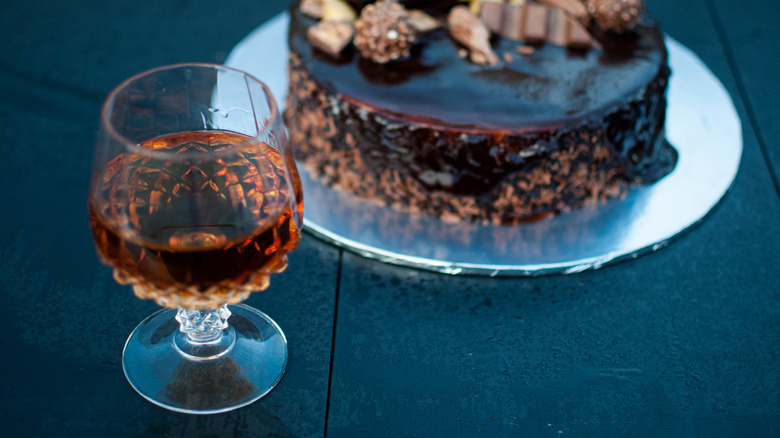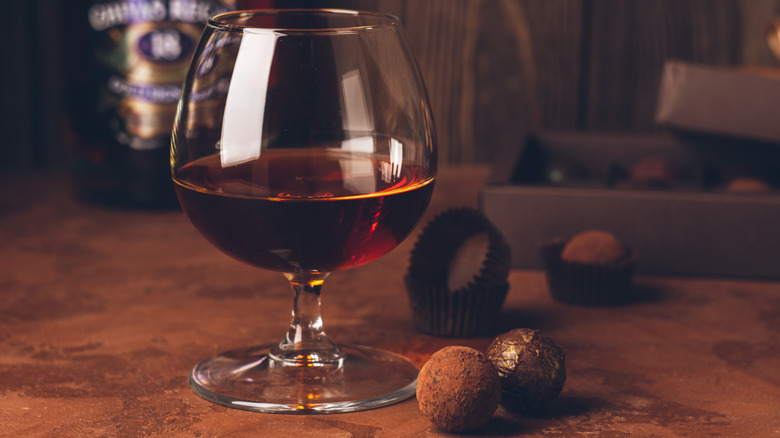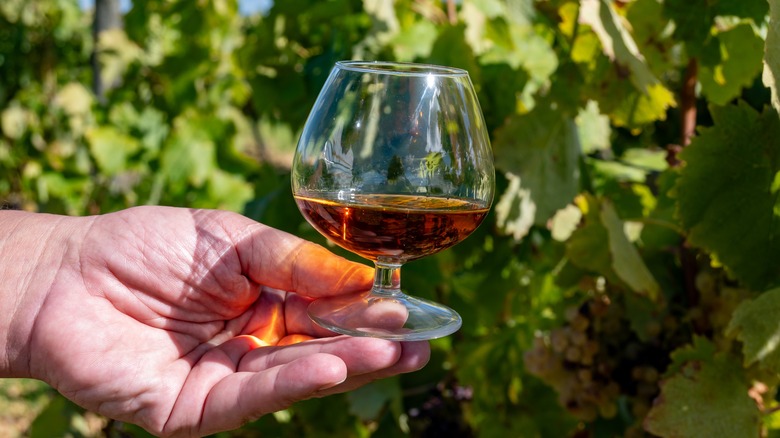Give Your Chocolate Desserts A Bold Boost With Cognac
Chocolate is pretty close to perfect in all its forms. Whether you prefer dark, milk, semi-sweet or bittersweet, white, or even the trendy pinkish ruby chocolate, it's hard to imagine anything better than biting into this natural wonder. That said, there are always innovative ways to satisfy your chocolate cravings and elevate the whole experience.
Some ingredients, like salt, vanilla, or vinegar, are known for their ability to highlight or emphasize other flavors in a recipe. Alcohol serves a similar purpose, especially in desserts, and one, in particular, is well suited for your chocolate masterpiece: cognac.
The profile of cognac, which is inherently fruity and spicy with a full, robust body, makes an ideal complement to chocolate. There is a depth of flavor to cognac that can stand up to the most nuanced chocolate desserts, and the alcohol content helps to highlight what makes it special, upgrading every bite to a whole new level.
Chocolate and Cognac's perfect pairing
Chocolate itself isn't a single flavor but an entire range from fruity to spicy and bitter to sweet, and cognac can be similarly complex and varied. The aromas of cognac range from dark fruit-like prune to brighter, apricot-like fragrances, and some can have sweeter smells like caramel and vanilla. The taste, like chocolate, can swing from tropically fruity to herbaceous — and even be reminiscent of cocoa itself. These possibilities make the matchup especially exciting. You may find some combinations complementary and others contrasting, and you can experiment with different versions of both ingredients until you land on the one that satisfies your needs.
The number of ways you can spin this boozy, bittersweet pairing is limited only by your imagination — and your cravings. But a few suggestions can get you started on your path toward sweet satisfaction. A chocolate layer mousse cake with cognac is an impressive dessert for a crowd, while chocolate cognac mousse in espresso cups is great if you need single servings. Cognac is an ideal addition to self-saucing puddings, either in a simple form or jazzed up with fruit like blackberries. Similarly, a brandy-based bread pudding with sour cherries plays on the inherent fruit character of certain cognacs. Add a splash to molten chocolate cake, or use this type of brandy to create a pourable chocolate sauce that makes an ideal topping for ice cream.
What's the story with Cognac?
Put simply, cognac is a type of brandy. Much like Champagne, a spirit called cognac must legally comply with a number of requirements, including the type of wood in which it is aged, the distillation process, and the variety of grapes used as its base. The grapes must come from the southwest part of France, known as Cognac.
Cognacs are aged in oak and can sometimes be rested for decades — commanding an understandably more considerable price at the shelf. And while cognac is often considered a sipping drink, especially as an after-dinner option, you can experiment with these spirits for your cocktail needs. The most iconic drinks may be the classic sidecar or champs-Elysees, but you can also swap out rye or whiskey for a cognac Manhattan or a riff on a refreshing mint julep.
Beyond chocolate desserts, cognac is also useful for all kinds of cooking and culinary adventures whether steak au poivre or coq au vin, french onion soup or lobster bisque, the bold, spicy, and fruity flavors of this spirit bring so much to the table regardless of mealtime.


